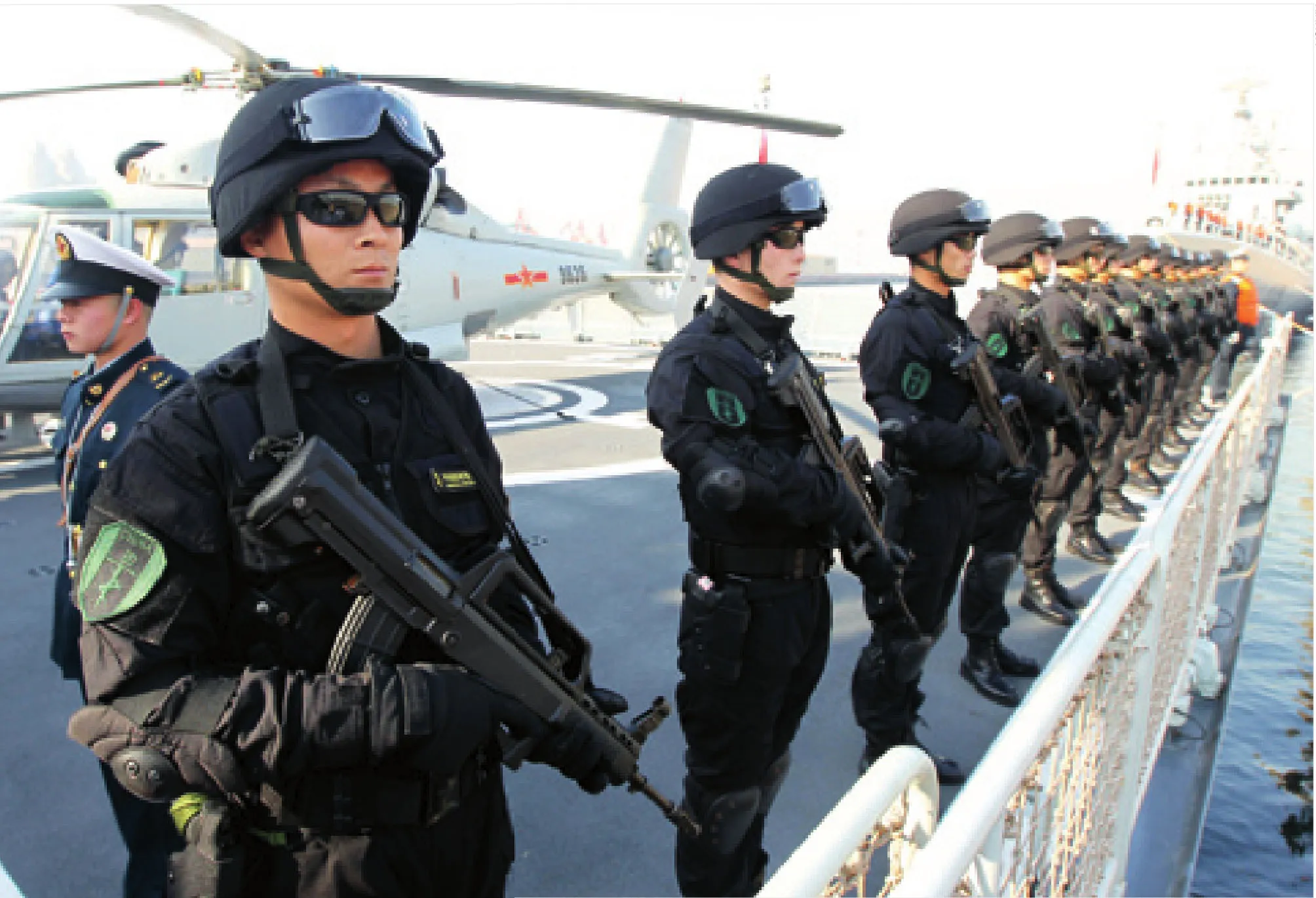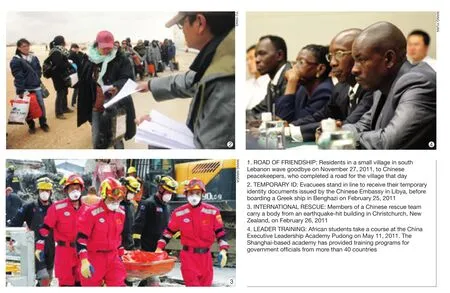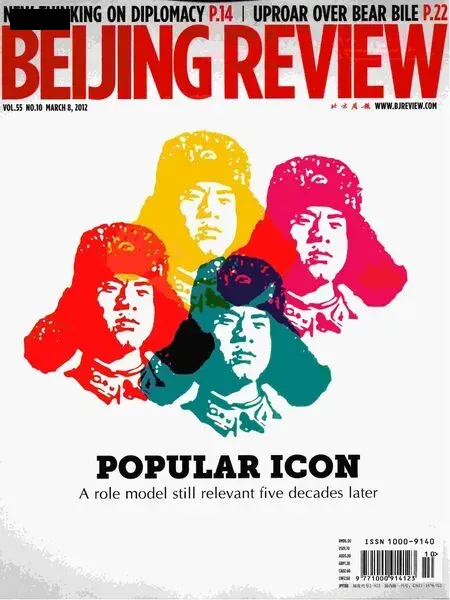New Direction for China’s Diplomacy
New Direction for China’s Diplomacy
China now is experiencing growing pains as its economic strength and international influence are on the rise. In the meantime, the international situation has changed, and the international community has higher expectations of China, hoping the country can shoulder bigger responsibilities in the world.
Based on changing internal and external factors, Professor Wang Yizhou, Vice Dean of the School of International Studies of Peking University, has initiated a new diplomatic concept—“creative involvement,” calling on China to actively play a bigger role and voluntarily get involved in international affairs. In a recent interview with Beijing Review reporter Ding Ying, Wang explained why this concept is relevant and what it means for China and the world. Edited excerpts follow:
Beijing Review: Why is a new concept of diplomacy necessary for China?
Wang Yizhou: Chinese diplomacy has undergone two phases since the founding the People’s Republic of China in 1949: Mao Zedong’s era and Deng Xiaoping’s era.
The Mao era stressed political independence, aiming to make China a “red giant” on the international political stage. So the diplomatic theme of this period was “revolutionary diplomacy.” In spite of some moderate diplomatic ideas such as Premier Zhou Enlai’s Five Principles of Peaceful Coexistence (mutual respect for sovereignty and territorial integrity, mutual non-aggression, non-interference in each other’s internal affairs, equality and mutual benefit, and peaceful coexistence), the major goal of China’s diplomacy was to advance revolutions, in Asia, in Africa and even throughout the world.
In line with the reform and opening-up policy adopted in 1978, the diplomatic goal of the Deng era has been guaranteeing domestic reform and economic development. Therefore, “commercial diplomacy” has been the dominant theme of China’s diplomacy.
Now China’s diplomacy is entering a new phase, during which opportunities and uncertainties coexist. China has become a participator and even one of the leaders of world affairs. Now Deng’s principles still guide the country’s policy-making process. China remains a free rider of the international system instead of a creator. But it cannot continue to follow this model in the new era.
China’s overseas interests are getting bigger along with its growing strength. The country needs to provide its own originality. In the meantime, the international community has new demands of China. Previously, China was considered an isolated giant on the world stage. Now it is climbing up to the top of the world from a regionally influential nation. China should be neither a rebel nor a free rider of the existing world system. It must come up with new ideas and make new contributions to the world.
Deng said China should keep a low profile when dealing with international affairs, which reflects the country’s consistently advocated diplomatic policies of independence, mutual benefit, peace and cooperation since 1978. These policies won’t and shouldn’t be changed. Essentially, the idea of “creative involvement” is a development and enrichment of Deng’s policies. And it is the inevitable de-mand of China’s diplomacy when the country is at a higher position with a broader vision.
China remains a free rider of the international system instead of a creator. But it cannot continue to follow this model in the new era
Can you give us a brief introduction of“creative involvement?”
“Creative involvement” stresses a new and active attitude—that is, China should have a stronger sense of participation and be more skillful when dealing with international affairs. It requires all foreign affairs-related government departments and Chinese people to more proactively and voluntarily participate in the discussion and resolution of regional and international issues, while sticking to the basic policy of reform and opening up.
China should carefully reconsider its diplomatic policy so as to adapt to changes at home and abroad. It needs to provide more original institutions, assistance and global public goods that can benefit people throughout the world, including a good environment, public health and peace, imprinting the future world with its contributions.

NAVAL ESCORT: A Chinese destroyer leaves Qingdao, east China’s Shandong Province, on February 27, 2012 for an anti-piracy escort mission in the Gulf of Aden and Somali waters
The concept also reminds Chinese foreign policy makers that China shouldn’t follow Western powers’ hegemony model of forcing other nations to accept solutions with an iron fist. Instead, China should use cautious, creative and constructive mediation when dealing with international issues. By sticking to and promoting our ideas such as new concepts on development and security and the vision of a harmonious world, which are based on Oriental civilization and Chinese wisdom of moderation and tolerance, China can properly deal with its relations with other nations, improve its image as a responsible power and have a greater say in international affairs.
“Creative involvement” is a concept that focuses on diplomatic, commercial and military fields and stresses improving flexibility and skills of foreign affairs-related departments. It can be considered as a new direction for China’s diplomacy. It will be a new option for China’s diplomacy based on its new position and strength as well as its culture and traditions. It will bring a Chinese style to the world stage during the process of the peaceful development of the country.
Is it a betrayal of China’s principle of non-inference in other countries’ internal affairs? What are its differences from Western powers’ interventionism?
Although advocating active participation in international affairs, “creative involvement”has essential differences from interventionism. It calls for active contact and involvement instead of intervention by force. It definitely is not an opposition to our traditional diplomatic principles, but an enrichment of these principles.
First, “creative involvement” should be conducted on the basis of international legitimacy. When implementing this strategy, China must follow three principles: obeying the UN Charter, being invited or accepted by local people or a majority of political parties in the state concerned, and conforming to the wishes of most of its neighboring countries.
Second, the strategy must be carried out according to China’s capability after cautious deliberation. China must classify its core interests, important interests, general interests and secondary interests. “Creative involvement” should be a selective move that China makes when dealing with affairs concerning its vital interests.

Third, “creative involvement” stresses diplomatic mediation and economic assistance instead of a military-first approach or armed suppression. It encourages the active exploration of all possible diplomatic options. Military force at most serves as a method of deterrence.
What is its requirement of China’s diplomacy?
China now is at an important stage of economic transformation, during which economic reforms must be carried out. China’s diplomacy also needs reform and transformation.“Creative involvement” is not only a craft, a skill, and an adjustment of attitude, but also a new diplomatic method that is in accordance with the current domestic and international situations. It emphasizes the originality and constructive function of China’s diplomacy. The Chinese Government should establish incentive mechanisms to encourage the diplomatic transition. It should encourage diplomats and diplomacy-related departments to conduct proactive, original and unconventional moves when dealing with foreign affairs. People from other professions are also expected to show a greater interest in international affairs and get involved.
China’s economic strength is growing very fast. Unfortunately, we have to say that we have yet to pay equal attention to our cultural influence. To some foreigners, China is still a lame giant, due to the insufficient global public goods that China has provided. China should increase the quality and quantity of its foreign assistance and shoulder greater international responsibilities in keeping with its growing economic strength. It should also send more young volunteers, medical workers, peacekeeping troops, anti-poverty teams and NGOs abroad to assist countries in need.
Can you give us some examples of “creative involvement?”
In recent years, Chinese diplomats have showed many examples of “creative involvement,” especially when dealing with emergencies. For example, Ambassador Liu Guijin was appointed as China’s special representative for Darfur in 2007. During the following years, he visited almost every region in Sudan and patiently mediated among leaders of different tribes. In a sense, it is this Chinese ambassador’s patient and meticulous work that has helped China maintain good relationships with both Sudan and South Sudan. In this example, “creative involvement” was China’s initiative to address a global concern. Other examples include the six-party talks on the Korean Peninsula nuclear issue, Chinese warship escorts in pirate-infested Somali waters and joint patrols along the Mekong River with Thailand, Myanmar and Laos.
From February to March 2011, the Chinese Government evacuated more than
1. ROAD OF FRIENDSHIP: Residents in a small village in south Lebanon wave goodbye on November 27, 2011, to Chinese peacekeepers, who completed a road for the village that day
2. TEMPORARY ID: Evacuees stand in line to receive their temporary identity documents issued by the Chinese Embassy in Libya, before boarding a Greek ship in Benghazi on February 25, 2011
3. INTERNATIONAL RESCUE: Members of a Chinese rescue team carry a body from an earthquake-hit building in Christchurch, New Zealand, on February 26, 2011

4. LEADER TRAINING: African students take a course at the China Executive Leadership Academy Pudong on May 11, 2011. The Shanghai-based academy has provided training programs for government officials from more than 40 countries 35,000 citizens from Libya, which was then under threat of war. This can be an action of “creative involvement” worth analyzing, because it created several records in the history of China’s diplomacy. This was the first time China evacuated citizens from a conflict-ridden foreign country using land, air and ocean passages, the first time it rented civil aircraft, foreign ships and planes on a large scale, the first time it ferried its citizens to third countries before getting them home, and the first time embassy officials issued emergency travel documents to prove Chinese evacuees’identities.
The evacuation, which was jointly conducted by the Chinese military, government departments and companies, displayed China’s capability in overseas citizen protection. It reflected China’s good relations with related countries, outstanding negotiating ability, strong financial power and impressive ability of mobilization and organization. In recent years, the Chinese Government and Chinese people have attached unprecedented importance to the protection of overseas interests, which demands the joint use of China’s military, commercial and diplomatic power.
Is “creative involvement” limited to crisis management?
“Creative involvement” can show its special advantages when an emergency happens. But it is more than crisis management. It encourages well-designed diplomatic plans and a proactive approach, which can be applied when handling day-to-day diplomatic affairs.
Let’s take the Sino-African relationship for example. The development of future Sino-African relations should be based on real mutual benefit and win-win solutions, requiring China to provide more assistance and public goods. When cooperating with African nations, China ought to offer more training courses to government officials, teachers and financial officials as well as proper technologies, such as solar energy and environmental protection. Some of these programs are already being carried out.
In the meantime, China should share its experiences and lessons on development with African nations. China’s development is not a zero-sum development, in which one country’s development results in another country’s poverty. China’s development is not a development of individual strength, but a development that can be shared. This kind of development is what the new world needs. Through “creative involvement,”China helps make the world more peaceful and prosperous.

